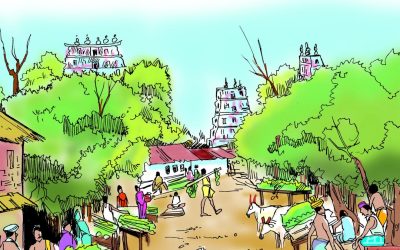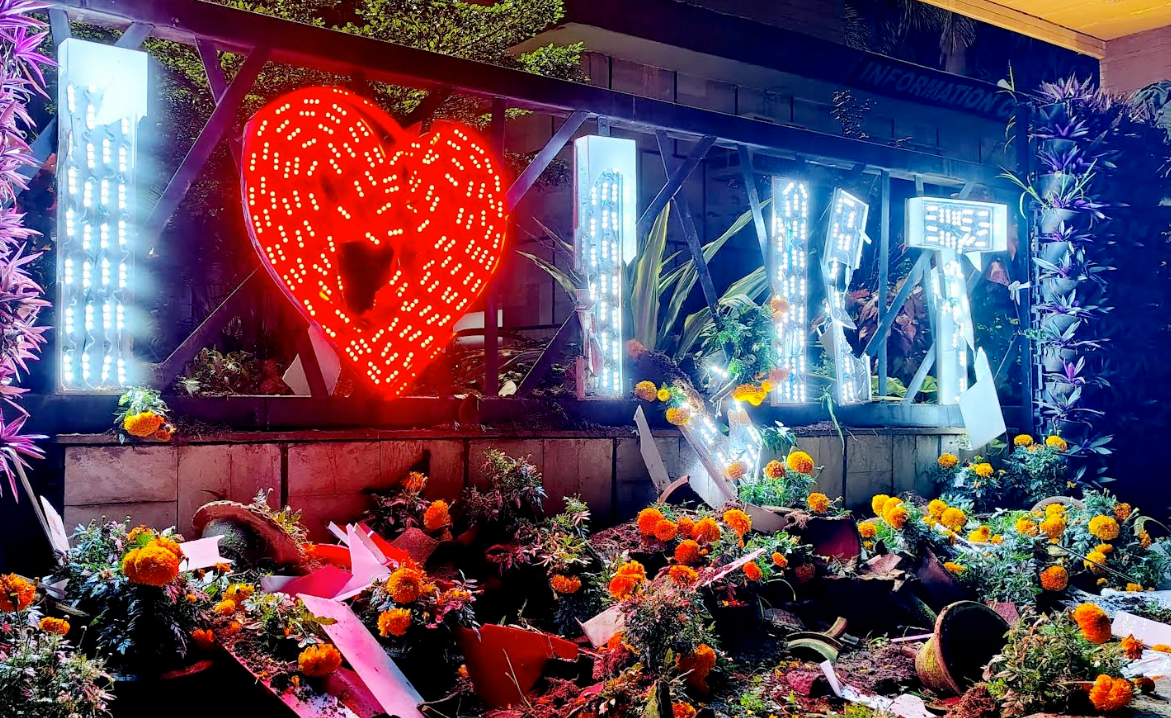Alchemies of Form at Bikaner House, an enchanting ensemble

When three Modern Masters and 3 younger contemporaries come together at the Sculpture Park at Bikaner House you know it’s going to be an experience to savour and cherish beyond the winter winds in Delhi.Presented together as a cohesive group this enchanting ensemble features the works of India’s master of monumental heads Himmat Shah, 99 year old Krishen Khanna and the Telangana maestro Thota Vaikuntam who has turned heads with his pair of feminine heads that are at once an elegant epoch of feminine fervour.
Alchemies of Form is Saffronart’s celebration of 25 years of service to the arts in India including antiquities, jewellery, books and contemporary art. Saffronart leads the world in Indian art auctions and this presentation is a milestone.
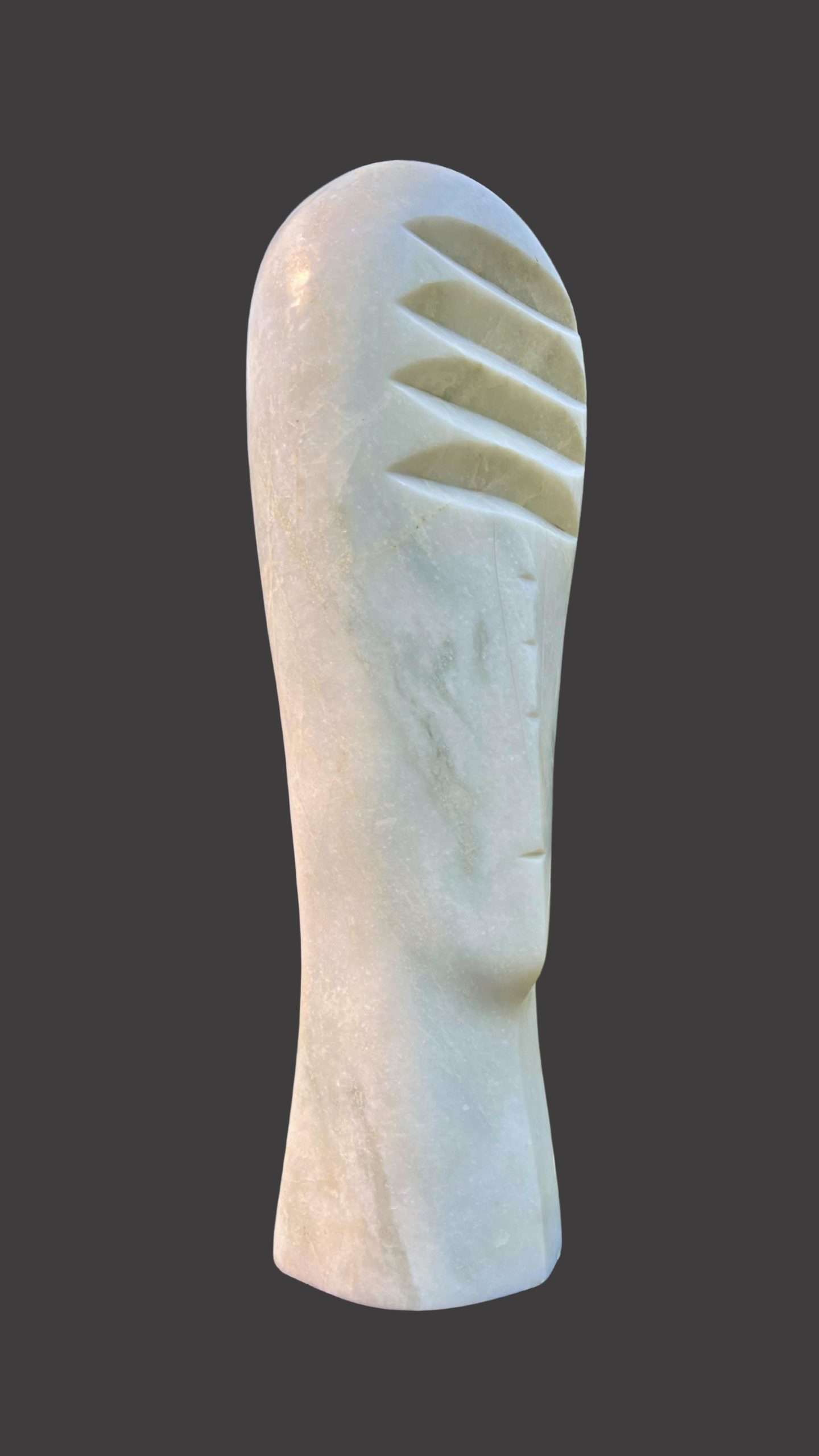
Himmat Shah’s heads
Gujrat born Himmat Shah has already had a historic retrospective at Jawahar Kala Kendra Jaipur and Bihar Museum Patna.He is represented here by 3 marble heads that are at once a treat for art lovers who wonder about sculptonic identities and practices in a contemporary world.
In an interview with me 4 years ago he said solitude was his constant companion. This Modernist master gazed at Constantin Brancusi’s foundry in the 1970s in France and wondered if India could ever achieve the attention to detail and technical prowess of in France .Shah’s three heads have an archetypal aura of antiquity even as they bring forward the tenets of tradition.
Today, Shah stands tall as an agent of iconicity in his marble heads that stand like monoliths of satin smooth perfection even as they reveal the textures of the grains of both tradition and modernity. Shah’s visual language is rooted in a unique form of rough hewn mysticism which casts the human head as a figment of personal, illusory fiction.Shah’s greatest collection belongs to the Kiran Nadar Museum.Curator Premjish Achari came to the sculpture court and stood studying the tallest white marble sculpture that drew the human gaze like none other.
He said: “ The totemic presence of Himmat Shah in the open air space, installed with its neutral colour scheme, marks a distinct identity of the sculpture as an entity demarcating itself from the historical conventions and claiming an autonomy for itself. ”
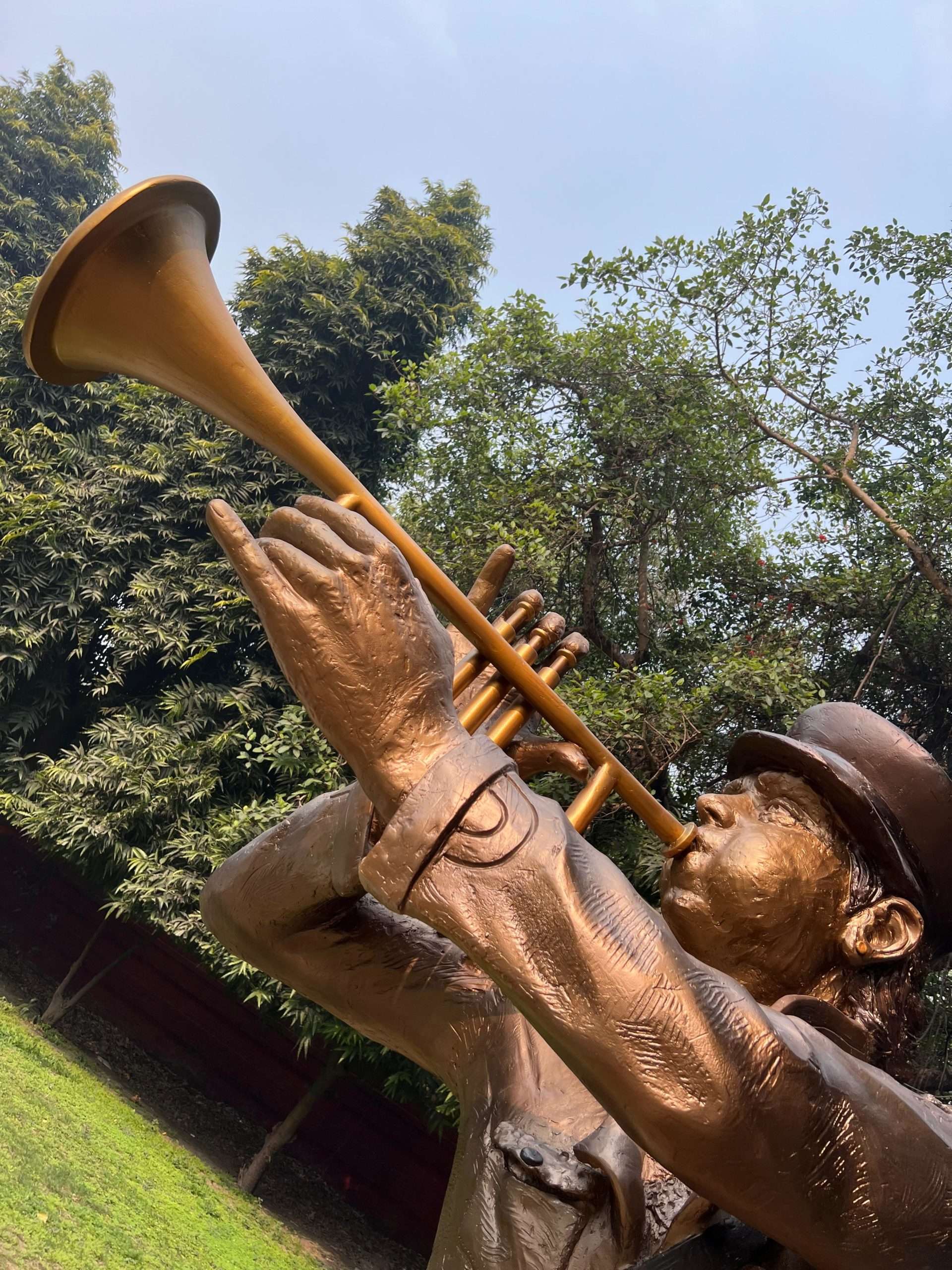
Krishen Khanna’s Bandwallahs
Facing the viewers as you step into the garden are Krishen Khanna’s Bandwallahs that form a repertoire of resonance that flit and float through the many nuances of the tunes that are played across the pages of time and tenor. The Bandwallahs for 99 year old Krishen are individuals of dedication and devotion.
When you look at the large images you recall Khanna’s words: “ I am moved by Chaplinesque situations which involve dual emotions. On the face of it, they can be very funny, even ridiculous. But there is a kind of pathos beneath it all. I see the bandwallah as a relic of the past, appropriated by Punjabis and the northern population in general for their marriage processions and the like. They turn into areas of colour and have little correspondence with those who instigated them.
Their cacophony too turns into a clash of colours, which I think is more coherent to the senses. It follows that my subject matter is important to me and is not fortuitous. Dependent on this choice are the means which will reveal it. Nor is it ever certain that every venture will be successful. What is certain, and which gives me some comfort, is that a moment of my life was spent in such absorption that bypassed time.”
The uniformed demeanour adds to their poise and in a subtle way we see Krishen’s love for music also mirrored in their postures that play the tunes of both gaiety as well as the forlorn parting of the bride in the wee hours of the morning as she leaves her parental home. Krishna’s Bandwallahs bring alive William Shakespeare’s adage from Twelfth Night : If Music be the food of love, play on.’
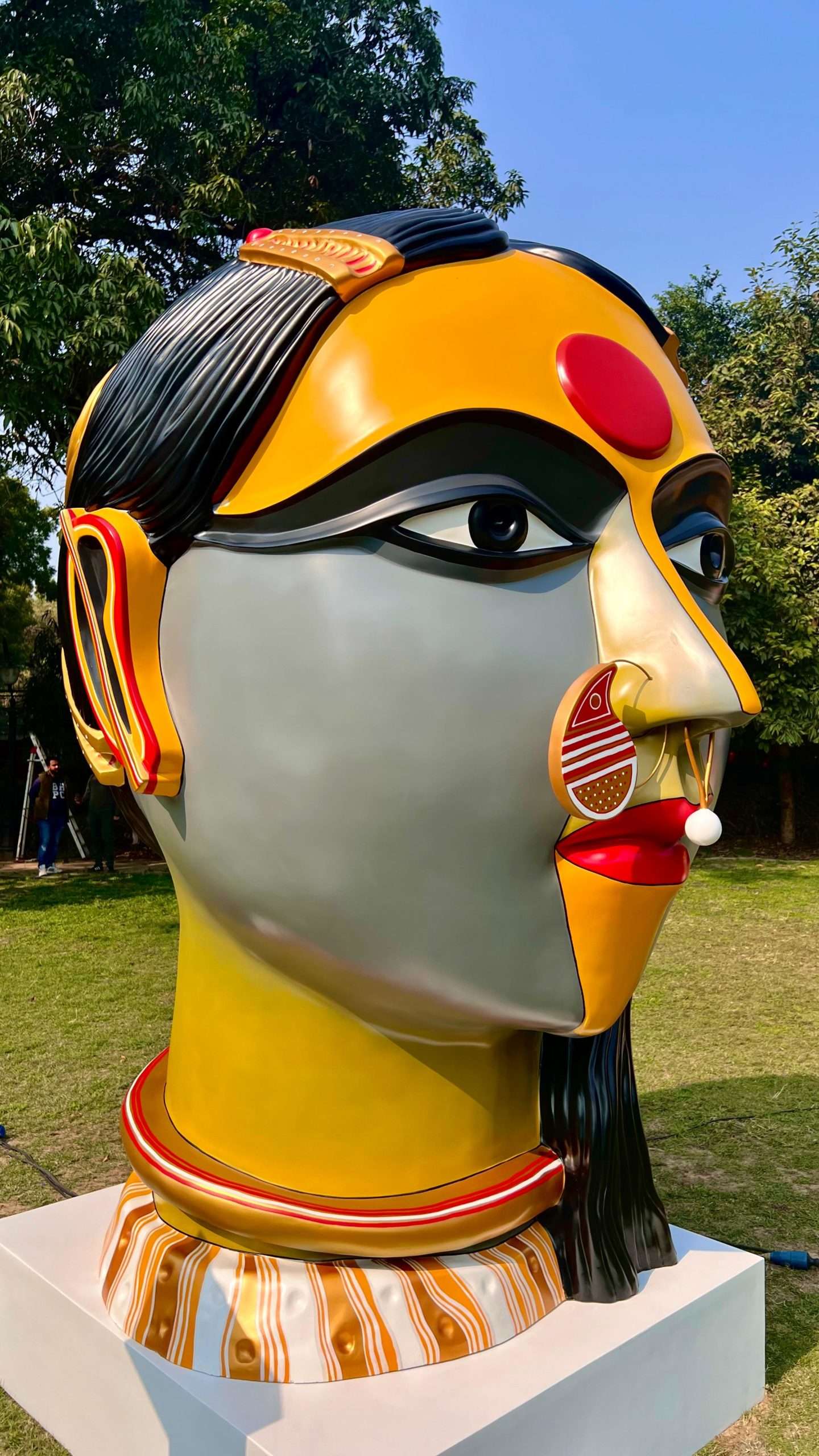
Thota Vaikuntam’s feminine fervour
Anaesthetist Shireen Mathew came on a Sunday and walked gracefully towards Thota Vaikuntam’s feminine heads and marvelled at his precision of translating hair embellishments replete with hair clips and age old ornaments.The nose ring was a hit with most women who visited the sculpture garden.
Vaikuntam the master has created these heads in colours of Indian skin and not as European fair skinned beings.His ability to bring in an animated articulation within the resinated fiberglass heads with automotive paint are a translation of his embellished with strokes of satin smooth finesse and finish replete with rural rhythms. The modern master Vaikuntam’s tribute to Telangana women is an extension of his many heads drawn ,painted and etched into millennial fantasy over more than 4 decades.It silently echoes the beauty of hair as an ultimate symbol of desire and beauty.
The feminine faces are lost in deep thought, reflecting into the distance. With eyes wide open in gaze we sense poised , inward-looking and self-contained beings who are content with their own lot.
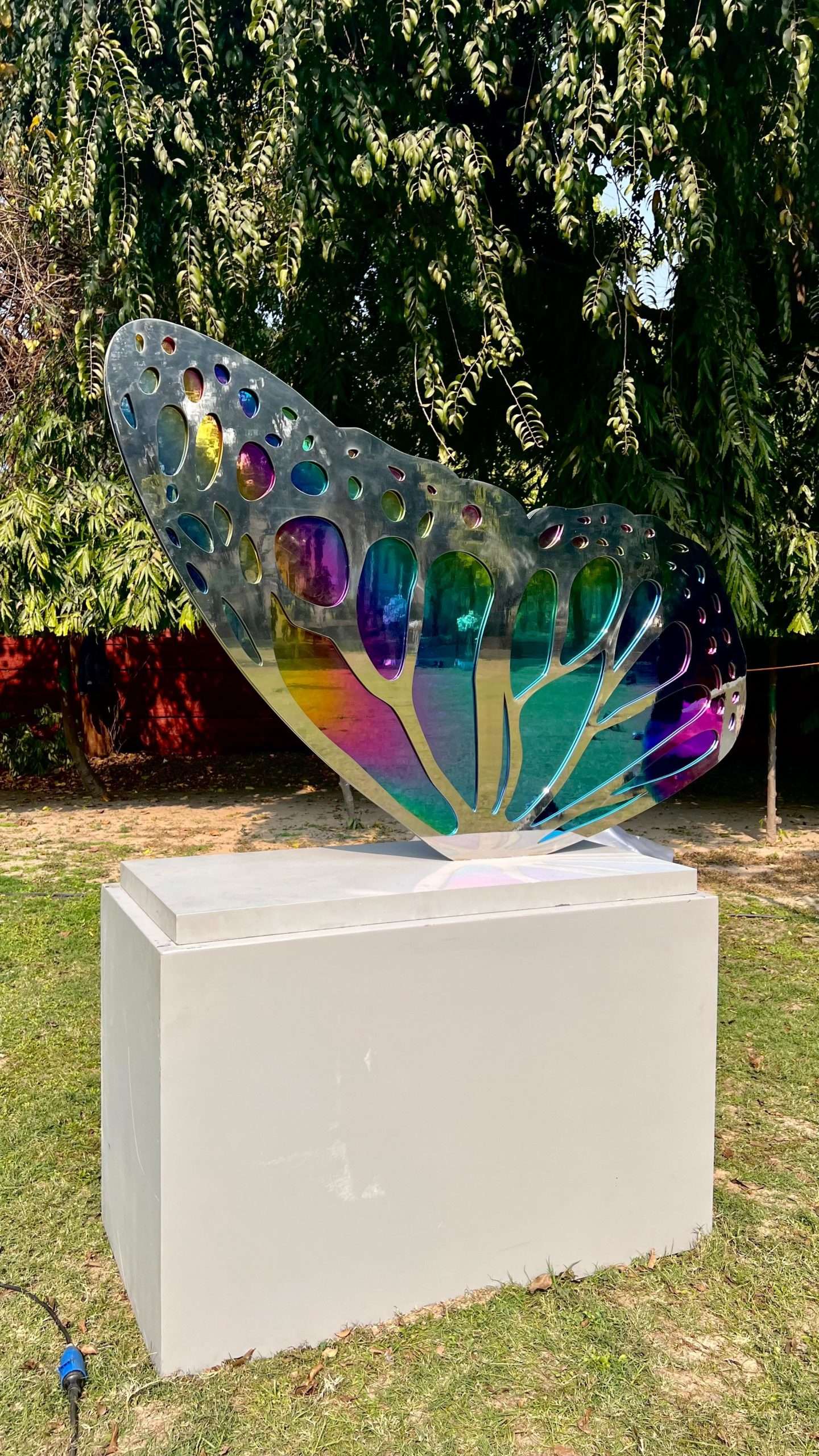
Phaneendra Nath Chaturvedi’s Butterflies
The single winged butterfly and the four winged wonder, both created from his study of the Monarch Butterfly, Phaneendra Nath Chaturvedi’s butterfly sculptures echo urban histories and reflections.His works go back to the Vedas and breathe a new language in the characteristics of botanical and individual wisdom.
Polished steel treated with modern technology creates a riveting reflective surface as the four winged Chaturayatan celebrates the ambience where it is placed.With the potential power of sunlight filtering through its densities and its potency in reflection here is a butterfly that stands as testimony to time this sculpture became a hit with selfie explorers.
But Phaneendra’s message runs deep .The short life span of a butterfly spells service at every breath of the being of life and speaks of the usefulness of an individual in the many moments that are lived.In more ways than one for Phaneendra, the butterfly is an embodiment of the secrets of form as mentioned in Indian texts from antiquity.
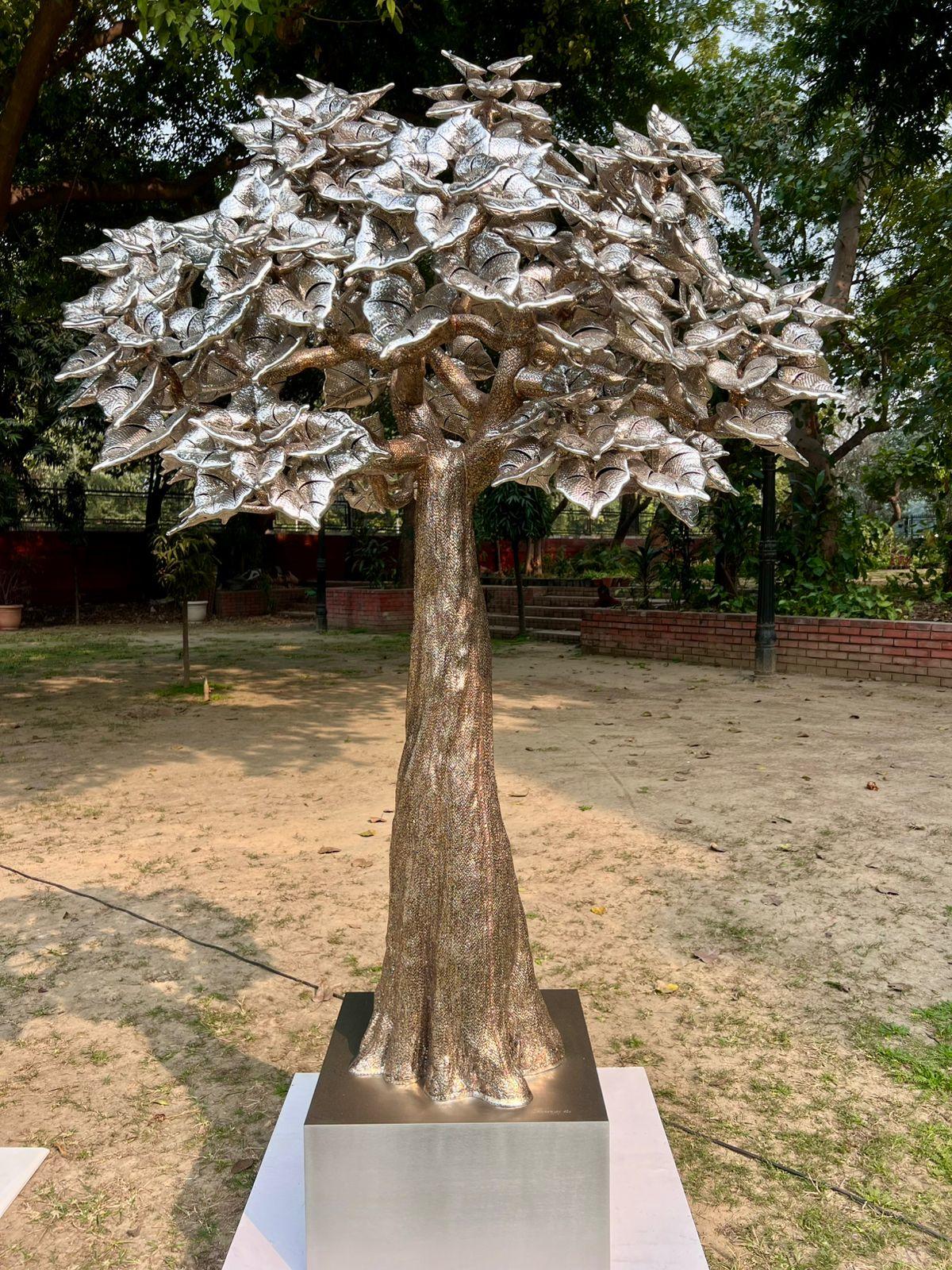
Dhananjay Singh’s expressive Trees
Standing in silence together are contemplative creator Dhananjay Singh’s Trees that tell us about time and tide. Dhananjay won the Lalit Kala National Award for his bronze tree created many years ago.This explorer of nature lives to create trees in myriad ways and fashions his own process of creating botanical brilliance with steel wires and intriguing casting techniques in metal.Dhananjay extols the virtues of Purusha Prakriti principles in his works that stand relics in a world that has forgotten the multiple uses of forests. “ When we have learned how to listen to trees,” Hermann Hesse wrote in his lyrical love letter “ then the brevity and the quickness and the childlike hastiness of our thoughts achieve an incomparable joy.”
Dhananjay has created his own techniques in the formation of both leaves with textural nuances as well as porous perfection and veined delights.
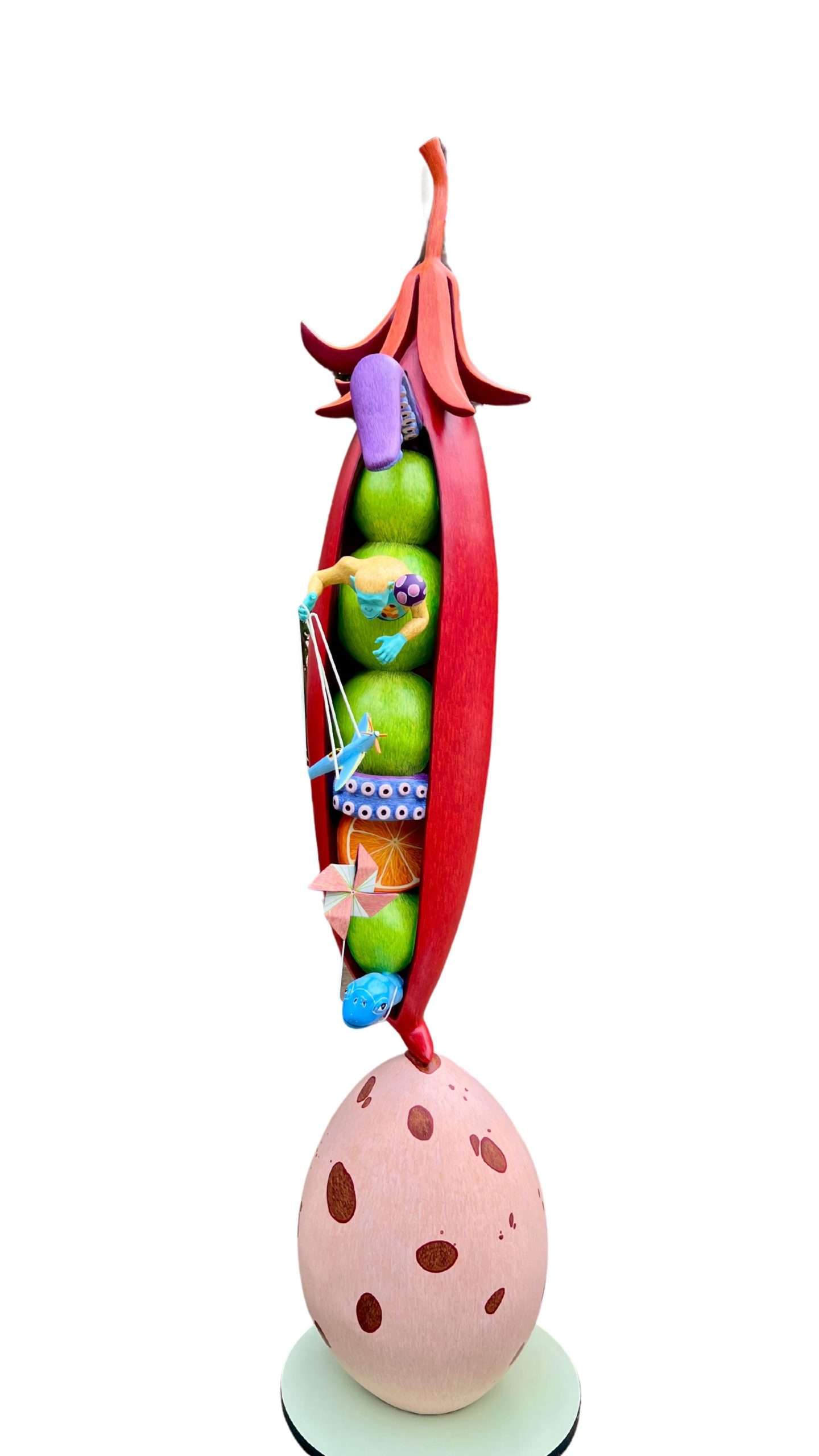
Yashika Sugandh’s playful pea pods
Two pea pods with animals and objects create a Walt Disney like animation in the work of the youngest sculptor and the only woman in this group of 6 artists is Yashika Sugandh. She has a tryst with the earth and its fertile fluidity that keeps its ecological system running. This quaint and curious study Matar is a play on the Darwinian delights of creating works that wrap around our senses.In terms of nutrition the pea pod is today a symbol of nutrition and a medicinal healer.Yashika who will show with Black Cube this year at Bikaner House says she was peeling a pod of peas when she discovered a caterpillar and took the stimulus from this.While she accords to it a playful tenor it is full of thematic brilliance.
The pod is more than just an object ,more than a mere vegetable it is the symbol of a lifestyle that speaks of healing and fibre driven goals for healthy human living.This sculptor discovered by the world famous chain Hermes last year , is a delight to behold, in a world torn by wars.
As the wind blows through the magnificent trees in this sculpture garden at Bikaner House, this gathering of titans of poetic and sculptural sentiment extol art not only as a source of joy, but as a source of moral wisdom and an improbable yet formidable model of what is noblest in the human character.Indeed ‘ Art is long, life is short !’
Images : Keyabala
Disclaimer
Views expressed above are the author’s own.
END OF ARTICLE
